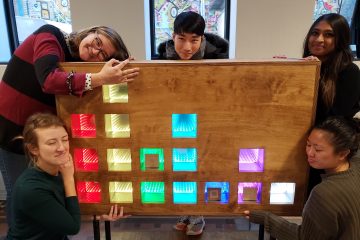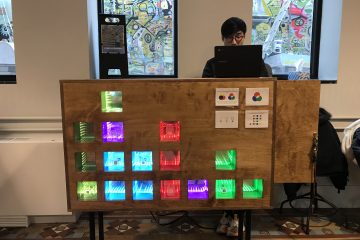Week 14
This Monday was Soft Opening, where ETC teams demo their projects to faculty! We transported our installation back from the MuseumLab to our project room for feedback.
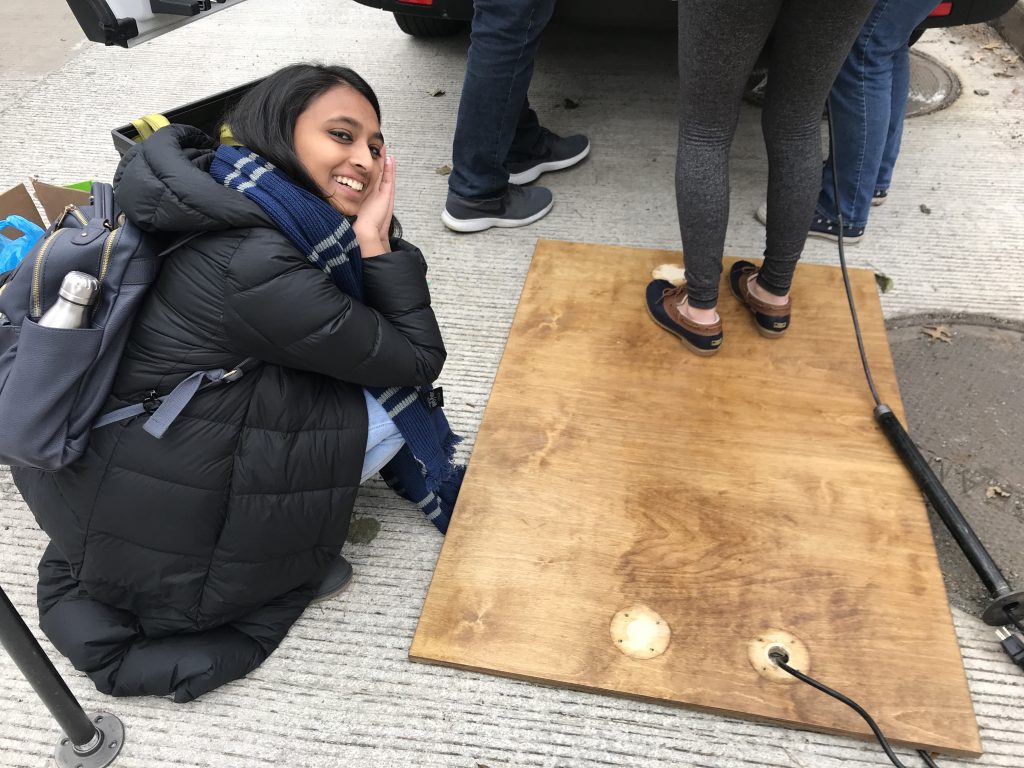
Nidhi stuck under the base during transport back to the ETC. 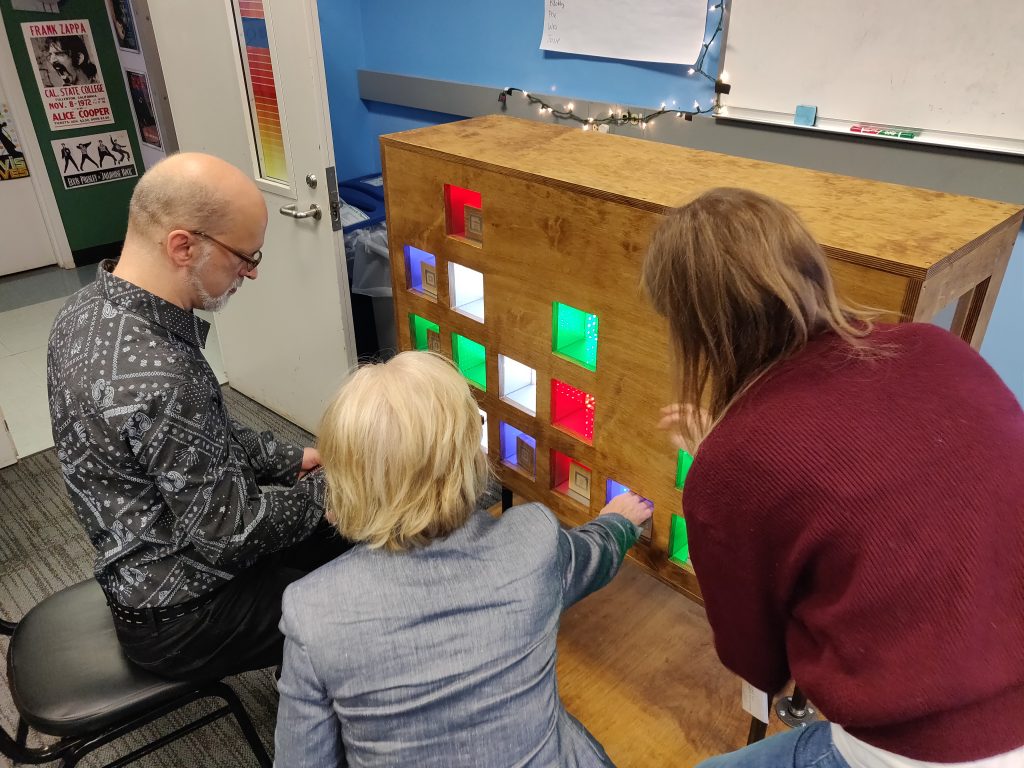
Jon Dessler acting as Shirl’s older brother.
For soft opening, we provided faculty with personas to embody during their play. These personas were decided based upon the demographics and style of play that we noticed during our 2 weeks of observations.
You can find the personas we provided below:
Persona 1: Younger Sibling
Age: 8 years old
Goals:
- You’re curious and want to play with as many things as possible.
- This is your first time at the MuseumLab and you’ve never seen so many cool things!
- You are impatient and want immediate responses to your actions.
- You may not understand what’s going on, but as long as it’s cool looking, you think it’s fun!
Persona 2: Older Sibling
Age: 12 years old
Goals:
- You’ve already been to the Children’s Museum many times, so you’re familiar with their older color mixing exhibits that use primary colors.
- This is your first time at the MuseumLab, and you want to try cool new things that are more your age.
- You’re here with your younger sibling, who has never been here before.
- You like to explain things to your younger sibling.
Persona 3: Parent
Age: 45 years old
Goals:
- You’ve brought your two children to the Children’s Museum, and they’ve already run through the entire main building.
- You’ve already paid for admission, and want to be able to kill more time at the MuseumLab.
- You want your children to learn something new and to be curious.
- You are willing to help them out and play with them.
- You want them to be engaged for as long as possible, because you’re not about to drive through rush hour traffic.
We also played ambient sound recorded from the MuseumLab space in an attempt to showcase why we did not implement sound in our experience (the space is already very loud!).
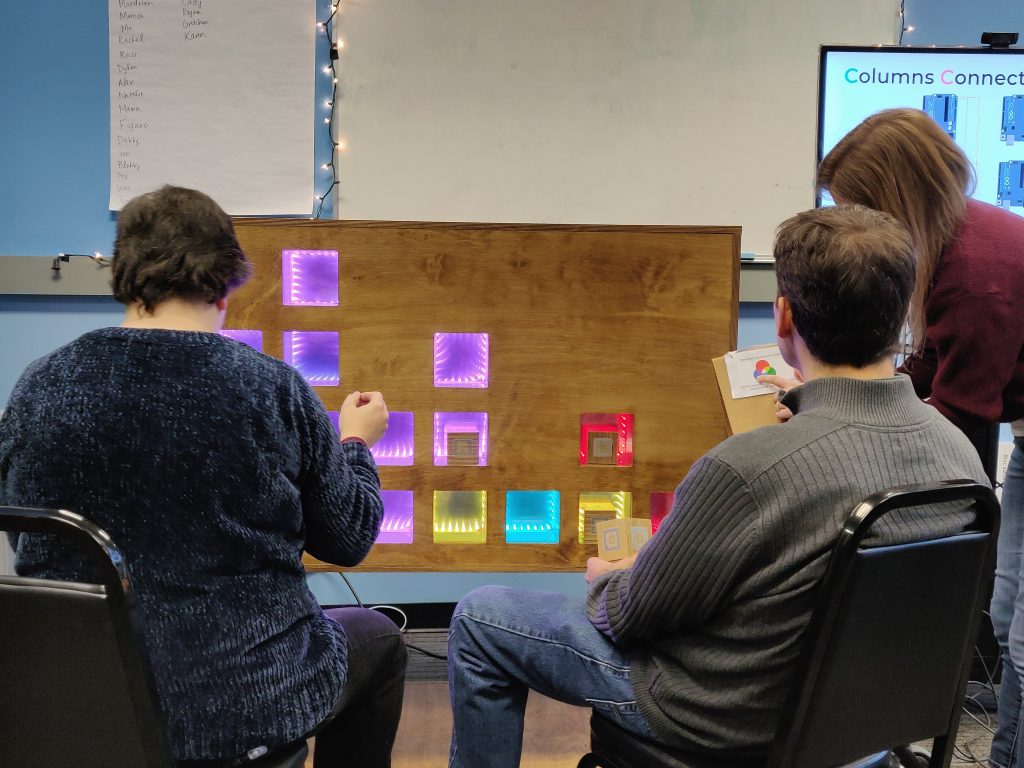
Overall, softs went very well! We were asked the following questions:
- What’s the logic? Why did we choose the larger color mixing effect?
- What is the player experience? Are people getting it? What are the conversations that you hear?
- What will break first? Is this robust? Will guests walk off with the blocks?
- Why these symbols and this block design?
- Does the experience reset?
- Why is there no sound?
- What is the one thing that we want the guest to know?
Luckily, we already had answers for all of those questions! We had a slide deck prepared with photos to show every iteration of our design and explain how we came to these conclusions (after many playtests with 200+ children!).
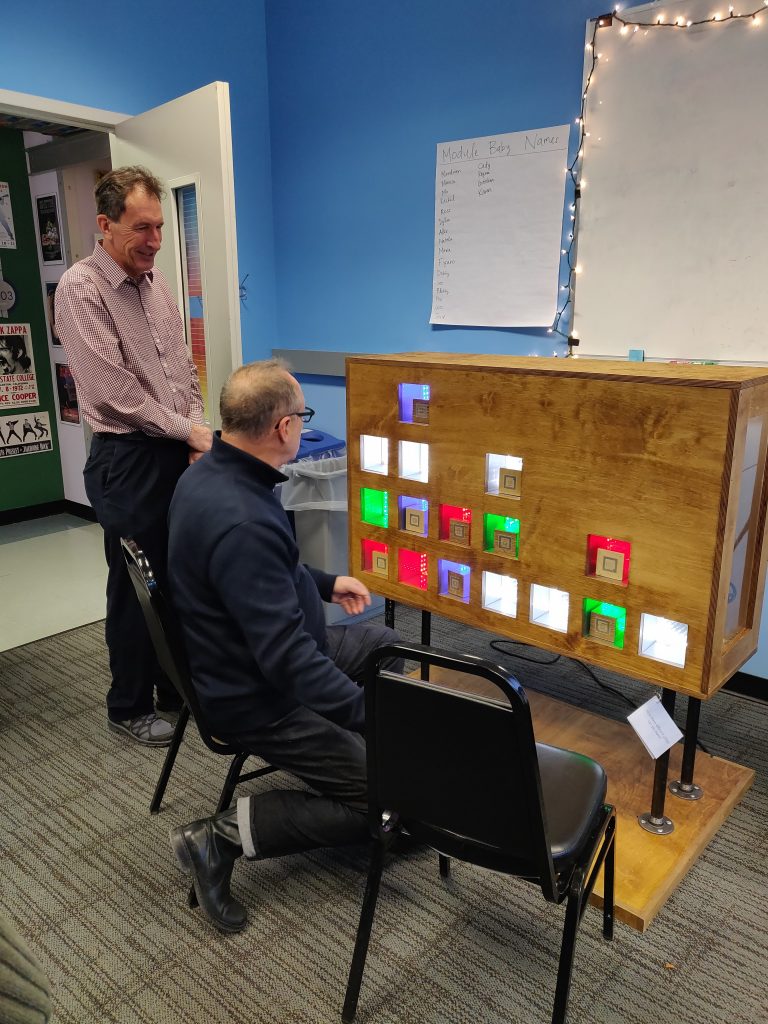
Positive feedback that we received:
- Liked the polycarb sides and lights
- Looks cool
- Glad that there was no right answer and that we can experiment
- Can play without having a learning shoved at them
- There’s no right way to play in the sandbox, just get dirty and have fun
- Really pleased with it
- Liked the symbols – reflective in the design
- Can’t remove RFID tag which is good
- Nice sturdy construction.
- Lights inside are a nice touch
- Balance between toy and game feels good
The one thing that we really need to work on before handoff is the onboarding. As the faculty said, “what this is isn’t connecting to the audience yet.”
Right after softs, we discussed as a team how we could make those changes (some were already in progress after playtesting observations during STEAM Carnival). We realized that right now the onboarding experience is confusing because we can’t predict what state the wall will be in when a guest approached. However, we did notice that the flow is not constant, so we may be able to add in resets.
We will:
- Change the hints to be larger, displayed on top of the installation, and shortened to 3 calls to action –> this will hopefully promote the guest to take action
- Add hidden interaction of when the guest turns the whole wall a color, it will display a cool effect and potentially reset the wall back to primary colors
- Change the seed effect: when the installation has not been interacted with for X amount of time, it will display the seed, and then clear the wall back to either black or dim white (will need to test) – if there is a block in the wall, the cubby will display that color –> this will hopefully make the experience easier to understand, since it’s easier to start from a blank wall, and much more rewarding
- We will playtest with 4 blocks: R, G, B, and BLACK; black being a new block that will turn off the lights in the cubbies
- We also may decorate the base with the RGB color wheel and symbols?
Since this week is a short week with Thanksgiving, the priority is to fix the communication among the modules. Right now, while they do communicate, there are some bugs. Once the communication is set up properly, it will make it easier for Nidhi and Wei to program any of the interactions that we mentioned above.
The second priority is to eat as much good food as possible.
The third priority is to take a much needed break and appreciate how much work we’ve put into our project! After many 50+ hour weeks spent on our project, we’re ready to take a little break before the final push. We’re really happy with how the experience turned out!
It’s absolutely incredible what we’ve managed to build together as a team. 14 weeks ago, we had never worked with hardware or assembled an entire installation (except our Fab Queen Marissa), and look at where we are now!
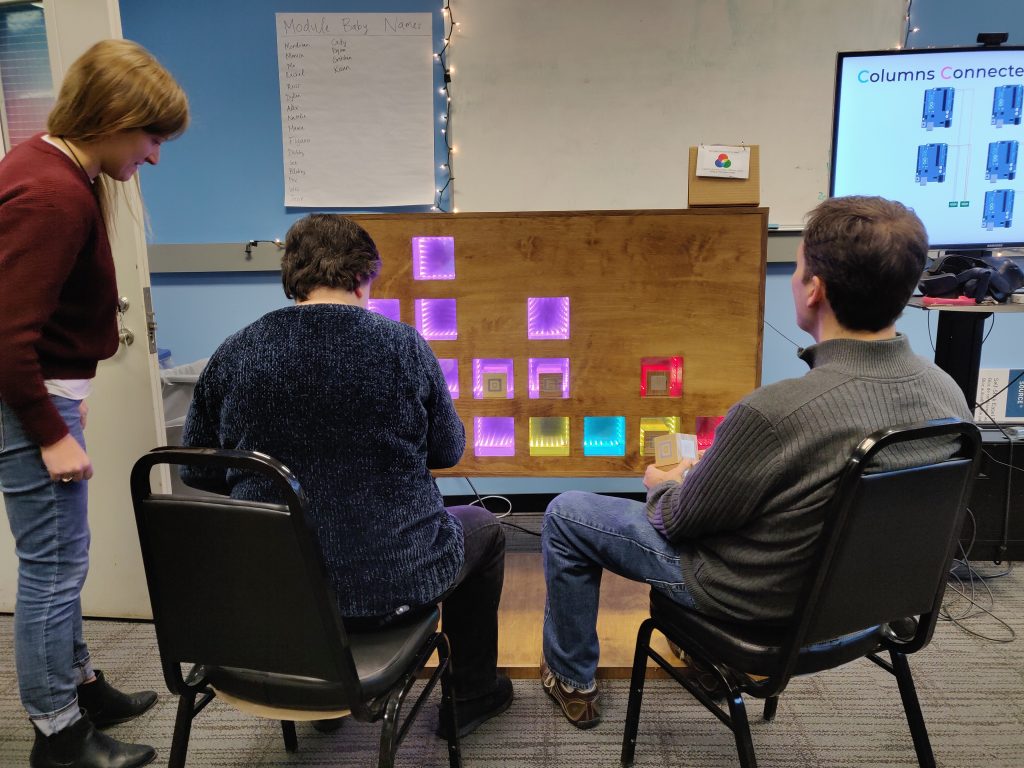
Our group has become a tight knit family over the past 14 weeks, and even though we’re really excited to be almost done, we’re also sad that it’s ending. We’ve had so much fun working together this semester and can’t imagine being on a team with anybody else. This Thanksgiving, we’re really grateful for our team!
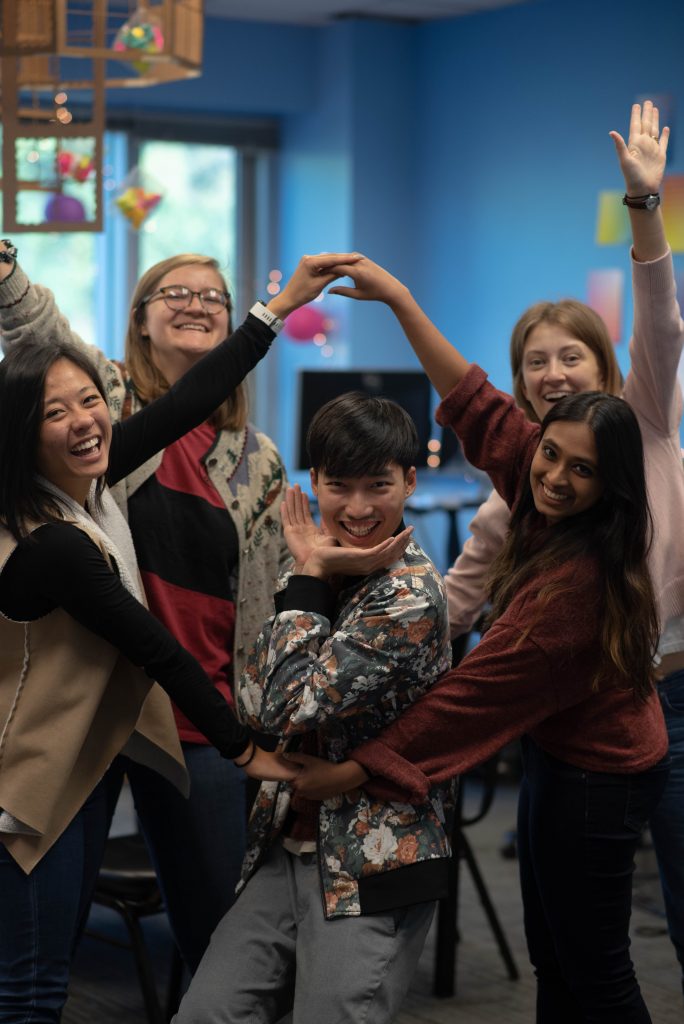
Happy Thanksgiving from our family to yours!
xoxo Techtile
